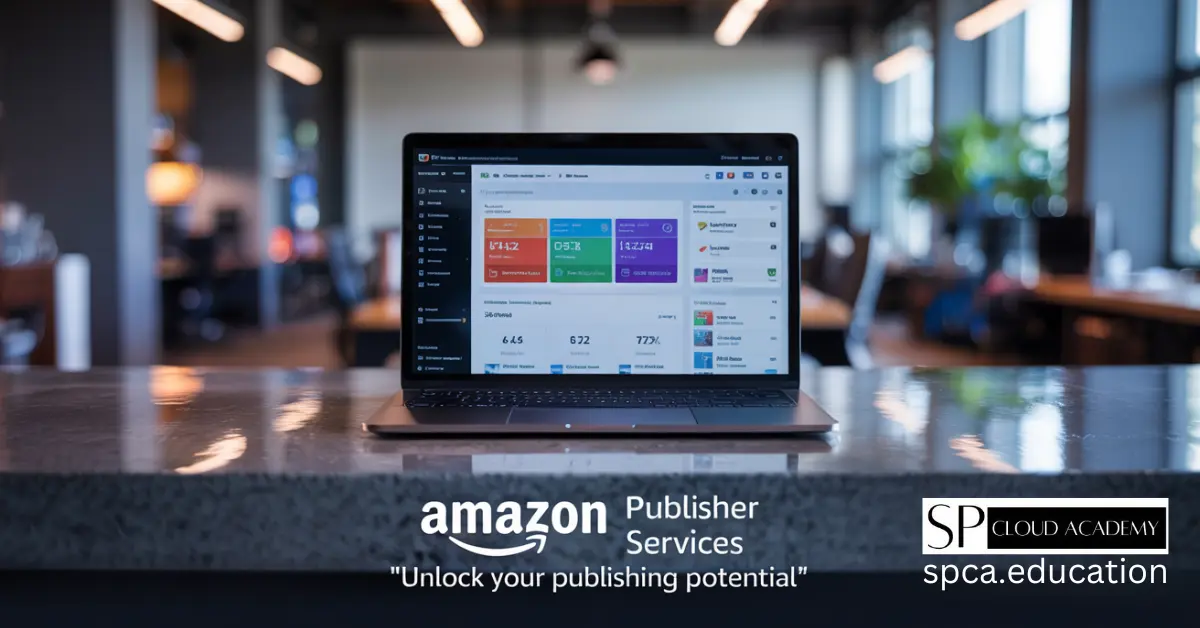In the ever-evolving world of digital marketing, Facebook remains a powerhouse platform for businesses of all sizes. With over 2.9 billion monthly active users as of 2023, Facebook offers unparalleled reach and targeting capabilities. As we look ahead to 2025, the platform is expected to continue evolving, offering new tools and features that marketers can leverage to drive engagement, conversions, and brand loyalty.
This comprehensive guide will take you from a beginner to a pro in Facebook marketing, covering everything from setting up your first campaign to advanced strategies that will help you stay ahead of the competition. Whether you’re a small business owner, a marketing professional, or someone looking to enhance their digital marketing skills, this blueprint will provide you with the knowledge and tools you need to succeed.
1. Introduction to Facebook Marketing
Facebook marketing involves using the platform to promote products, services, or brands. It encompasses a range of activities, including organic content creation, paid advertising, and community engagement. The goal is to connect with your target audience, build brand awareness, and drive conversions.
Why Facebook Marketing?
- Massive Reach: With billions of users, Facebook offers access to a vast audience. This makes it an ideal platform for businesses looking to expand their reach and connect with potential customers on a global scale.
- Targeted Advertising: Facebook’s ad platform allows you to target users based on demographics, interests, behaviors, and more. This level of precision ensures that your ads are seen by the people most likely to be interested in your products or services.
- Engagement Opportunities: Features like comments, shares, and likes enable direct interaction with your audience. This two-way communication helps build relationships and fosters brand loyalty.
- Cost-Effective: Compared to traditional advertising, Facebook marketing can be more affordable and offer a higher ROI. With flexible budgeting options, even small businesses can run effective campaigns without breaking the bank.
2. Setting Up Your Facebook Business Page
Your Facebook Business Page is the foundation of your Facebook marketing efforts. It’s where you’ll share content, engage with your audience, and run ads. A well-optimized Business Page can significantly enhance your brand’s online presence and credibility.
Steps to Create a Facebook Business Page
- Sign Up: Go to Facebook.com and sign up for a Business Page. You’ll need a personal Facebook account to create and manage a Business Page.
- Choose a Category: Select the category that best represents your business (e.g., Local Business, Brand, or Public Figure). This helps Facebook understand your business and suggest relevant features.
- Add Details: Fill in your business name, address, phone number, and website. Ensure that all information is accurate and up-to-date.
- Profile and Cover Photos: Upload high-quality images that represent your brand. Your profile picture should be your logo, and your cover photo should reflect your brand’s personality or current promotions.
- About Section: Write a compelling description of your business, including keywords for SEO. This section should clearly communicate what your business does and what makes it unique.
- Call to Action (CTA): Add a CTA button (e.g., “Shop Now,” “Contact Us”) to encourage user action. Choose a CTA that aligns with your business goals, such as driving traffic to your website or generating leads.
Optimizing Your Page
- Consistent Branding: Ensure your profile and cover photos align with your brand identity. Use consistent colors, fonts, and imagery across all your marketing materials.
- Complete Information: Fill out all sections, including hours, services, and products. The more information you provide, the easier it is for potential customers to find and engage with your business.
- Engage Regularly: Post content consistently and respond to comments and messages promptly. Regular engagement helps build trust and keeps your audience interested in your brand.
3. Understanding Facebook’s Algorithm
Facebook’s algorithm determines what content appears in users’ News Feeds. Understanding how it works is crucial for maximizing your reach and engagement. The algorithm is designed to show users the content that is most relevant to them, based on their interactions and preferences.
Key Factors Influencing the Algorithm
- Relevance: Content that is relevant to the user’s interests is prioritized. This includes posts from friends and family, as well as content from Pages they interact with frequently.
- Engagement: Posts with higher engagement (likes, comments, shares) are more likely to be shown. The algorithm favors content that sparks conversations and interactions.
- Content Type: Different content types (e.g., videos, images, links) have varying levels of reach. Videos, especially live videos, tend to perform better than static images or text posts.
- Recency: Newer posts are given priority over older ones. Timely and current content is more likely to appear in users’ News Feeds.
Tips to Beat the Algorithm
- Post High-Quality Content: Focus on creating valuable, engaging content that resonates with your audience. High-quality content is more likely to be shared and engaged with, boosting its visibility.
- Encourage Interaction: Ask questions, run polls, and create content that prompts users to engage. The more interactions your posts receive, the more likely they are to be seen by a larger audience.
- Use Facebook Live: Live videos tend to get higher engagement and are favored by the algorithm. They also provide an opportunity for real-time interaction with your audience.
- Post at Optimal Times: Use Facebook Insights to determine when your audience is most active. Posting during these times increases the likelihood of your content being seen and engaged with.
4. Creating Engaging Content
Content is the backbone of your Facebook marketing strategy. It’s what attracts, engages, and converts your audience. Creating content that resonates with your audience requires a deep understanding of their needs, interests, and preferences.
Types of Content to Post
- Images and Videos: Visual content tends to perform better on Facebook. Use high-quality images and videos to capture attention. Videos, in particular, are highly engaging and can convey more information than static images.
- Blog Posts and Articles: Share links to your blog posts or articles that provide value to your audience. Ensure that the content is relevant and offers actionable insights or solutions.
- Infographics: Infographics are a great way to present information in a visually appealing manner. They are highly shareable and can help simplify complex concepts.
- User-Generated Content: Share content created by your customers to build trust and authenticity. User-generated content (UGC) can include reviews, testimonials, or photos of customers using your products.
- Polls and Questions: Engage your audience by asking for their opinions or feedback. Polls and questions are interactive and can provide valuable insights into your audience’s preferences.
Content Creation Tips
- Know Your Audience: Create content that addresses the needs, interests, and pain points of your target audience. Use audience insights and analytics to understand what resonates with them.
- Use Storytelling: Stories are powerful tools for connecting with your audience on an emotional level. Share stories about your brand, customers, or community to create a deeper connection.
- Keep It Short and Sweet: Attention spans are short, so get to the point quickly. Use concise and clear language to convey your message effectively.
- Include a CTA: Always include a clear call to action to guide your audience on what to do next. Whether it’s visiting your website, signing up for a newsletter, or making a purchase, a strong CTA can drive action.
5. Facebook Advertising: The Basics
Facebook Ads are a powerful tool for reaching a larger audience and driving specific actions, such as website visits, app installs, or purchases. With Facebook’s advanced targeting options, you can ensure that your ads are seen by the right people at the right time.
Types of Facebook Ads
- Image Ads: Simple ads that use a single image to promote your product or service. These are easy to create and can be highly effective when paired with compelling copy.
- Video Ads: Video content that can be more engaging and informative. Video ads allow you to tell a story, demonstrate a product, or showcase customer testimonials.
- Carousel Ads: Ads that allow you to showcase multiple images or videos in a single ad. These are ideal for highlighting different products or features.
- Slideshow Ads: Lightweight video ads created from a series of images. Slideshow ads are a cost-effective alternative to video ads and can be used to tell a story or showcase a product.
- Collection Ads: Ads that feature a collection of products, ideal for e-commerce businesses. These ads allow users to browse and purchase products directly from the ad.
- Lead Ads: Ads designed to capture leads directly within Facebook. These ads are perfect for businesses looking to generate leads without requiring users to leave the platform.
Setting Up Your First Facebook Ad Campaign
- Define Your Objective: Choose from objectives like brand awareness, traffic, engagement, leads, or conversions. Your objective will determine the type of ad you create and how it will be optimized.
- Set Your Budget: Decide on a daily or lifetime budget for your campaign. Start with a small budget and scale up as you see positive results.
- Target Your Audience: Use Facebook’s targeting options to reach your ideal audience. You can target based on demographics, interests, behaviors, and more.
- Create Your Ad: Choose the ad format, upload your creative, and write compelling ad copy. Ensure that your ad is visually appealing and includes a strong CTA.
- Monitor and Optimize: Track your ad performance and make adjustments as needed. Use Facebook Ads Manager to analyze metrics like CTR, CPC, and conversion rates.
Tips for Successful Facebook Ads
- A/B Testing: Test different ad creatives, copy, and targeting options to see what works best. A/B testing helps you identify the most effective elements of your ads.
- Use Retargeting: Retarget users who have interacted with your brand to increase conversions. Retargeting ads can remind users of products they viewed or encourage them to complete a purchase.
- Leverage Lookalike Audiences: Reach new users who are similar to your existing customers. Lookalike audiences are created based on your customer data and can help you expand your reach.
- Optimize for Mobile: Ensure your ads are mobile-friendly, as most Facebook users access the platform via mobile devices. Use vertical or square formats for better visibility on mobile screens.
6. Advanced Facebook Advertising Strategies
Once you’ve mastered the basics, it’s time to explore advanced strategies to take your Facebook advertising to the next level. These strategies can help you maximize your ROI and achieve more sophisticated marketing goals.
Custom Audiences
Custom Audiences allow you to target users based on their interactions with your business, such as website visits, app activity, or email lists. This level of targeting ensures that your ads are shown to users who are already familiar with your brand.
- Website Custom Audiences: Target users who have visited specific pages on your website. For example, you can target users who viewed a product but didn’t make a purchase.
- App Activity Custom Audiences: Reach users based on their interactions with your app. This is ideal for businesses with mobile apps looking to drive engagement or conversions.
- Customer List Custom Audiences: Upload a list of customer emails or phone numbers to target them directly. This is useful for retargeting existing customers or promoting new products.
Dynamic Ads
Dynamic Ads automatically promote products to users who have expressed interest in them, such as by viewing them on your website or adding them to their cart. These ads are highly personalized and can significantly increase conversion rates.
- Product Feed: Upload a product catalog to Facebook. This feed contains all the products you want to advertise, along with details like price, availability, and images.
- Automated Targeting: Facebook will show the right products to the right users based on their behavior. For example, if a user viewed a specific product on your website, they will see an ad for that product on Facebook.
- Personalization: Dynamic Ads can be personalized to show users products they are most likely to purchase. This level of personalization increases the relevance of your ads and improves their effectiveness.
Facebook Pixel
The Facebook Pixel is a piece of code that you place on your website to track conversions, optimize ads, and build audiences. The Pixel provides valuable data that can help you refine your advertising strategy.
- Conversion Tracking: Track actions like purchases, sign-ups, and form submissions. This data helps you understand which ads are driving the most conversions.
- Audience Building: Create Custom Audiences based on user behavior on your website. For example, you can create an audience of users who added a product to their cart but didn’t complete the purchase.
- Ad Optimization: Use pixel data to optimize your ads for specific conversions. For example, you can optimize your ads for purchases by targeting users who are most likely to buy.
Advanced Retargeting
Retargeting is a powerful strategy to re-engage users who have interacted with your brand but haven’t converted. By targeting these users with personalized ads, you can encourage them to complete a purchase or take another desired action.
- Cart Abandonment: Target users who added products to their cart but didn’t complete the purchase. Use dynamic ads to show them the exact products they left in their cart.
- Engagement Retargeting: Retarget users who have engaged with your content or ads. For example, you can target users who watched a video ad or clicked on a link.
- Cross-Selling and Upselling: Promote complementary or higher-value products to users who have made a purchase. For example, if a user bought a camera, you can target them with ads for camera accessories.
7. Leveraging Facebook Groups
Facebook Groups are a valuable tool for building a community around your brand and fostering engagement. Groups provide a space for your audience to connect, share ideas, and engage with your brand on a deeper level.
Benefits of Facebook Groups
- Community Building: Create a space where your audience can connect and engage with each other. A strong community can enhance brand loyalty and advocacy.
- Increased Engagement: Groups tend to have higher engagement rates than Pages. Members are more likely to interact with content and participate in discussions.
- Direct Communication: Communicate directly with your most loyal customers and fans. Groups provide a more intimate setting for conversations and feedback.
- Feedback and Insights: Use groups to gather feedback and insights from your audience. This can help you improve your products, services, and marketing strategies.
Tips for Managing a Facebook Group
- Set Clear Rules: Establish guidelines for group behavior to maintain a positive environment. Clearly communicate the purpose of the group and what type of content is allowed.
- Post Regularly: Share valuable content and encourage discussions to keep the group active. Regular posts keep members engaged and coming back for more.
- Engage with Members: Respond to comments, answer questions, and participate in discussions. Active engagement from the group admin fosters a sense of community and trust.
- Promote Your Group: Use your Page, email list, and other channels to attract members to your group. Promote the benefits of joining the group to encourage sign-ups.
8. Facebook Analytics and Insights
Understanding your performance is key to optimizing your Facebook marketing strategy. Facebook provides a range of analytics tools to help you track and measure your success. These tools provide valuable insights into your audience, content performance, and ad effectiveness.
Facebook Insights
Facebook Insights is a built-in analytics tool for Pages that provides data on your audience, content performance, and more. Insights help you understand how your content is performing and how your audience is engaging with it.
- Page Views: Track how many people are viewing your Page. This metric helps you understand the overall reach of your Page.
- Post Reach: Measure the number of people who have seen your posts. Reach metrics help you understand how far your content is spreading.
- Engagement: Analyze likes, comments, shares, and other interactions. Engagement metrics provide insights into how your audience is interacting with your content.
- Audience Demographics: Understand the age, gender, location, and interests of your audience. This information helps you tailor your content to better meet the needs of your audience.
Facebook Ads Manager
Ads Manager provides detailed analytics for your ad campaigns, including performance metrics, audience insights, and conversion tracking. Ads Manager is a powerful tool for optimizing your ad campaigns and maximizing your ROI.
- Campaign Performance: Track metrics like impressions, clicks, and conversions. These metrics help you understand how your ads are performing and where improvements can be made.
- Audience Insights: Analyze the demographics and behavior of your ad audience. This information helps you refine your targeting and create more effective ads.
- Conversion Tracking: Measure the effectiveness of your ads in driving specific actions. Conversion tracking helps you understand which ads are driving the most valuable actions, such as purchases or sign-ups.
Third-Party Analytics Tools
In addition to Facebook’s built-in tools, there are several third-party analytics tools that can provide deeper insights and advanced features. These tools can help you manage multiple social media accounts, track engagement, and generate detailed reports.
- Hootsuite: Manage and analyze your social media performance across multiple platforms. Hootsuite provides tools for scheduling posts, monitoring engagement, and generating reports.
- Sprout Social: Track engagement, monitor keywords, and generate reports. Sprout Social offers advanced analytics and reporting features to help you optimize your social media strategy.
- Buffer: Schedule posts, analyze performance, and manage your social media accounts. Buffer provides tools for content scheduling, engagement tracking, and performance analysis.
9. Facebook Marketing Tools and Resources
To streamline your Facebook marketing efforts, there are a variety of tools and resources available. These tools can help you create content, schedule posts, manage ads, and analyze performance.
Content Creation Tools
- Canva: Create stunning graphics and visuals for your Facebook posts. Canva offers a wide range of templates and design elements to help you create professional-looking content.
- Adobe Spark: Design social media graphics, web pages, and video stories. Adobe Spark provides easy-to-use tools for creating visually appealing content.
- Animoto: Create professional-quality videos for your Facebook ads and posts. Animoto offers templates and tools for creating engaging video content.
Scheduling and Management Tools
- Hootsuite: Schedule posts, monitor engagement, and manage multiple social media accounts. Hootsuite provides a centralized platform for managing all your social media activities.
- Buffer: Plan and schedule content, analyze performance, and collaborate with your team. Buffer offers tools for content scheduling, engagement tracking, and team collaboration.
- Later: Visual content calendar for scheduling Instagram, Facebook, Twitter, and Pinterest posts. Later provides tools for planning and scheduling content across multiple platforms.
Advertising Tools
- Facebook Ads Manager: Create, manage, and analyze your Facebook ad campaigns. Ads Manager provides tools for creating ads, targeting audiences, and tracking performance.
- AdEspresso: Optimize and automate your Facebook ad campaigns. AdEspresso offers tools for A/B testing, ad optimization, and performance tracking.
- Qwaya: Manage and optimize your Facebook ads with advanced features like A/B testing and automation. Qwaya provides tools for ad management, optimization, and reporting.
Learning Resources
- Facebook Blueprint: Free online training courses and certifications for Facebook marketing. Facebook Blueprint offers a wide range of courses to help you master Facebook marketing.
- HubSpot Academy: Free courses on social media marketing, including Facebook. HubSpot Academy provides in-depth courses on digital marketing and social media strategy.
- Coursera: Online courses on digital marketing and social media strategy. Coursera offers courses from top universities and institutions to help you enhance your marketing skills.
10. Staying Ahead: Facebook Marketing Trends for 2025
As we look ahead to 2025, several trends are expected to shape the future of Facebook marketing. Staying ahead of these trends will be crucial for maintaining a competitive edge and achieving long-term success.
1. Increased Focus on Privacy
With growing concerns over data privacy, Facebook is likely to introduce more privacy-focused features. Marketers will need to adapt by being more transparent about data collection and usage. This includes providing clear privacy policies and obtaining explicit consent from users.
2. Rise of Augmented Reality (AR)
AR is expected to play a bigger role in Facebook marketing, with more brands using AR filters and effects to engage users. AR can enhance the shopping experience by allowing users to visualize products in their own environment.
3. Growth of Video Content
Video content will continue to dominate, with live videos, stories, and short-form videos becoming even more popular. Brands will need to invest in high-quality video production and explore new formats to capture audience attention.
4. Integration with E-Commerce
Facebook is likely to further integrate e-commerce features, making it easier for businesses to sell directly on the platform. This includes features like in-app shopping, product catalogs, and seamless checkout experiences.
5. AI and Automation
AI and automation will play a bigger role in Facebook marketing, from ad targeting to content creation and customer service. AI-powered tools can help marketers optimize campaigns, personalize content, and improve customer interactions.
6. Emphasis on Community Building
Building and nurturing online communities will become increasingly important, with Facebook Groups playing a central role. Brands will need to focus on creating meaningful interactions and fostering a sense of belonging among their audience.
7. Personalization
Personalized content and ads will become more prevalent, as brands seek to deliver more relevant and tailored experiences to their audience. This includes using data to create personalized recommendations, offers, and messages.
11. Conclusion
Facebook marketing is a dynamic and ever-evolving field, but with the right strategies and tools, you can achieve remarkable success. From setting up your Business Page to mastering advanced advertising techniques, this blueprint provides a comprehensive guide to help you navigate the world of Facebook marketing.
As we move towards 2025, staying ahead of the curve will be crucial. By embracing new trends, leveraging the latest tools, and continuously optimizing your strategy, you can ensure that your Facebook marketing efforts remain effective and impactful.
Remember, the key to success in Facebook marketing lies in understanding your audience, creating engaging content, and continuously analyzing and refining your approach. With dedication and persistence, you can transform from a beginner to a pro, achieving your marketing goals and driving your business forward.
Recommended Resources:
- Facebook Blueprint: Facebook Blueprint
- Canva: Canva
- Hootsuite: Hootsuite
- AdEspresso: AdEspresso
Amazon Links:
- Facebook Marketing for Dummies: Buy on Amazon
- Contagious: How to Build Word of Mouth in the Digital Age: Buy on Amazon
- Jab, Jab, Jab, Right Hook: How to Tell Your Story in a Noisy Social World: Buy on Amazon
By following this complete Facebook marketing blueprint, you’ll be well-equipped to navigate the complexities of the platform and achieve your business objectives in 2025 and beyond. Happy marketing!
See Also
-

Amazon Publisher Services Explained: Why Top Publishers Are Making the Switch
-

The Best Ad Networks of 2025: The Ultimate Monetization Guide for Your Website and App
-

Video Marketing Ideas for Rapid Engagement: Boost Your Audience Interaction Today
-

Email Marketing Strategies to Boost Sales Fast
-

10 Digital Advertisement Techniques That Skyrocket Your Brand’s Success Overnight
-

The Ultimate Dropshipping Blueprint: Step-by-Step Guide to Success
